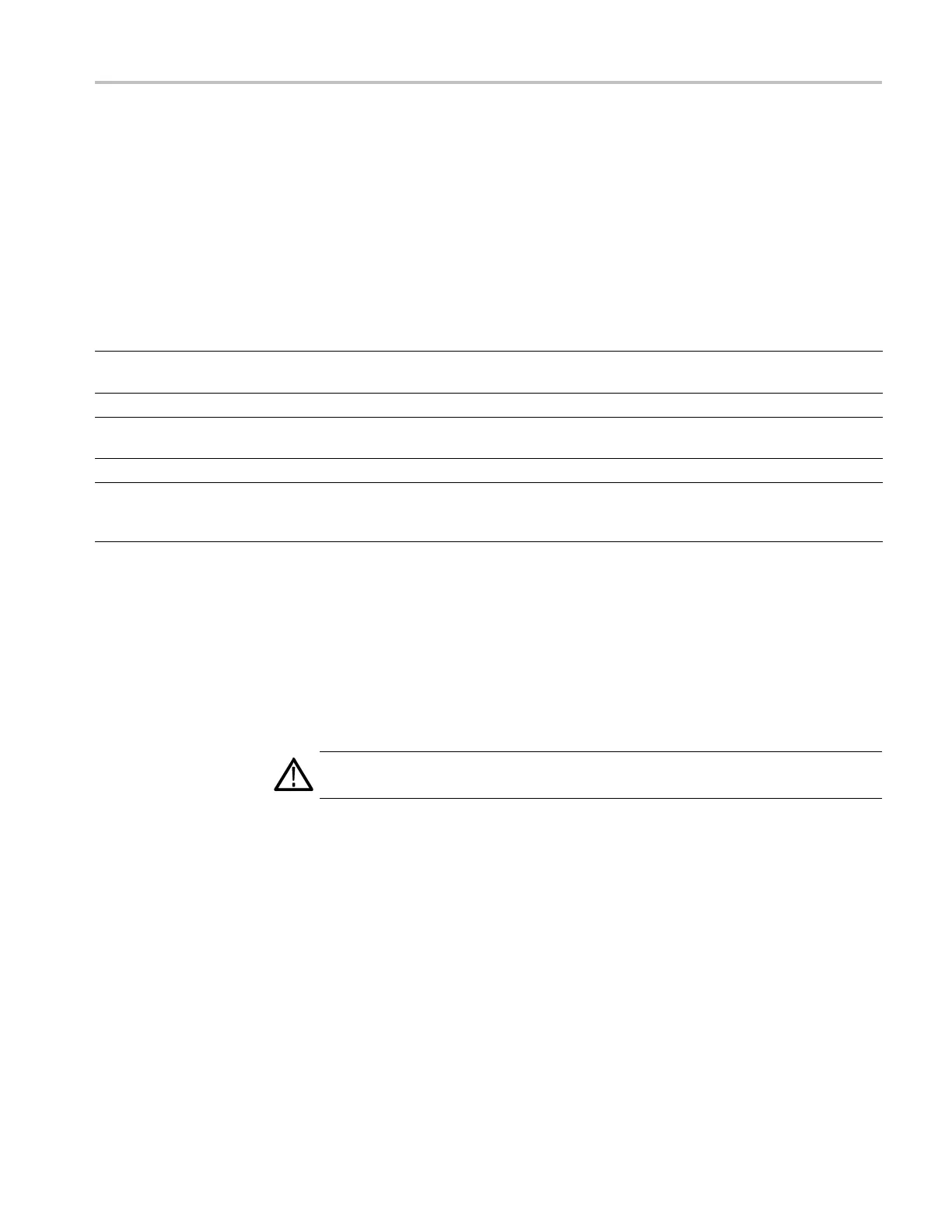Maintenance
If the display i
s very dirty, m oisten the wipe with distilled water or a 75%
isopropyl alcohol solution and gently rub the display surface. Avoid using excess
force or you may damage the plastic display surface.
Exterior Inspection
Inspect the o
utside of the o scilloscope for dama ge, wear, and missing part. (See
Table 16.) Immediately repair defects that could cause personal injury or lead
to further damage to the oscilloscope.
Table 16: External inspection checklist
Item Inspect for Repair action
Front and rear case
Cracks, scratches, deformations, damaged
hardware
Repair or replace defective module
Front-panel knobs Missing, damaged, or loose knobs
Repair or replace missing or defective knobs
Connectors
Broken shells, cracked insulation, and
deformed contacts. Dirt in connectors
Repair or replace defective modules. Clear
or wash out dirt.
Carrying handle, and cabinet feet Correct operation Repair or replace defective module
Accessories
Missing items or parts of items, bent pins,
broken or frayed cables, and damaged
connectors
Repair or replace damaged or missing
items, frayed cables, and defective modules
Interior Inspection
To access the inside of the oscilloscope for inspection and cleaning, refer to the
Remo
val Procedures in this section.
Inspect the internal portions of the oscilloscope for damage and wear. (See
Tab
le 17.) R epair any defects immediately.
If any circuit board is repaired or replaced, check the table to see if it is necessary
to
adjust the oscilloscope. (See Ta ble 17.)
CAUTION. To prevent damage from electrical a rcing, make sure that circuit
boards and components are dry before applying power to the oscilloscope.
TDS2000C and TDS1000C-EDU Series Oscilloscope Service Manual 51

